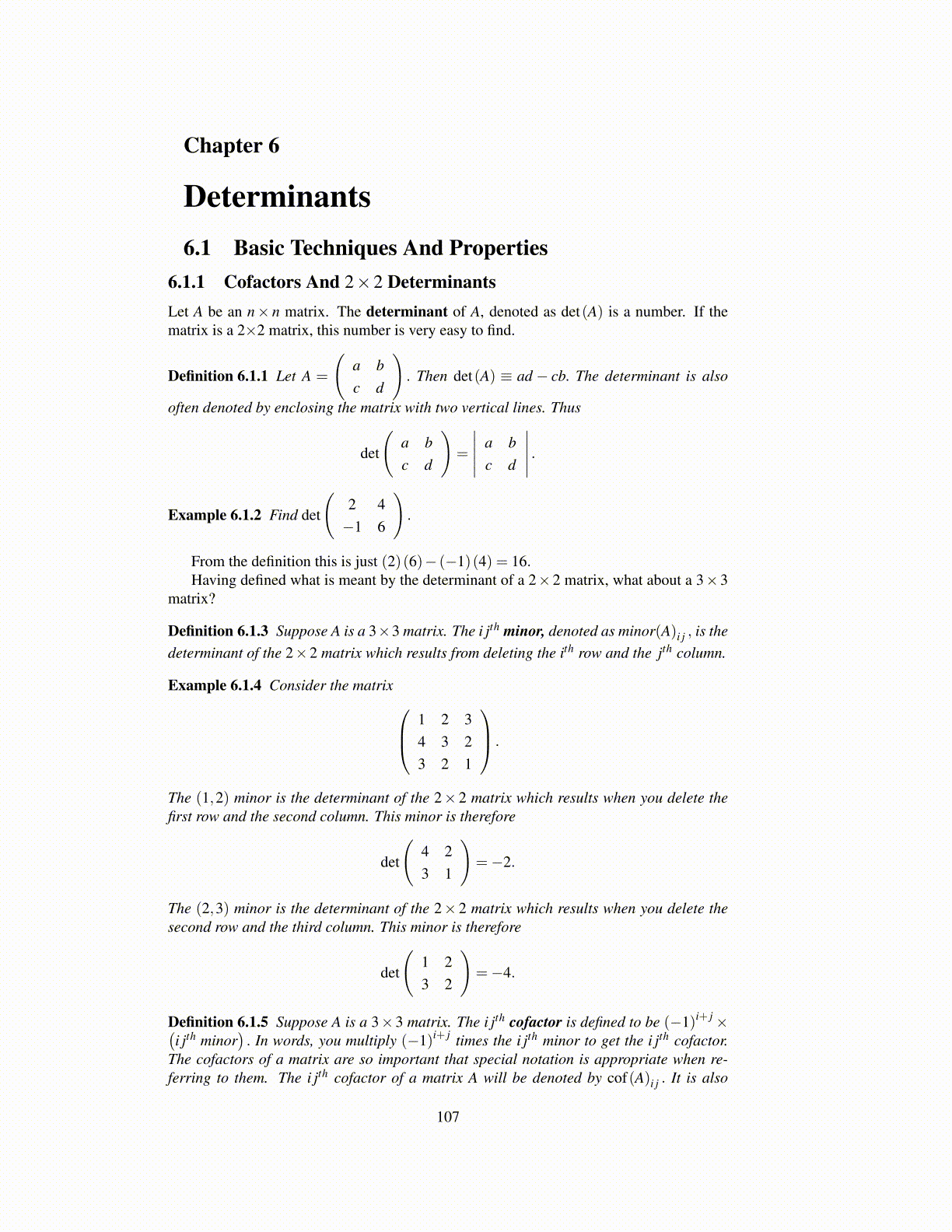
Chapter 6
Determinants6.1 Basic Techniques And Properties
6.1.1 Cofactors And 2×2 DeterminantsLet A be an n× n matrix. The determinant of A, denoted as det(A) is a number. If thematrix is a 2×2 matrix, this number is very easy to find.
Definition 6.1.1 Let A =
(a bc d
). Then det(A) ≡ ad − cb. The determinant is also
often denoted by enclosing the matrix with two vertical lines. Thus
det
(a bc d
)=
∣∣∣∣∣ a bc d
∣∣∣∣∣ .Example 6.1.2 Find det
(2 4−1 6
).
From the definition this is just (2)(6)− (−1)(4) = 16.Having defined what is meant by the determinant of a 2×2 matrix, what about a 3×3
matrix?
Definition 6.1.3 Suppose A is a 3×3 matrix. The i jth minor, denoted as minor(A)i j , is thedeterminant of the 2×2 matrix which results from deleting the ith row and the jth column.
Example 6.1.4 Consider the matrix 1 2 34 3 23 2 1
.
The (1,2) minor is the determinant of the 2× 2 matrix which results when you delete thefirst row and the second column. This minor is therefore
det
(4 23 1
)=−2.
The (2,3) minor is the determinant of the 2× 2 matrix which results when you delete thesecond row and the third column. This minor is therefore
det
(1 23 2
)=−4.
Definition 6.1.5 Suppose A is a 3×3 matrix. The i jth cofactor is defined to be (−1)i+ j×(i jth minor
). In words, you multiply (−1)i+ j times the i jth minor to get the i jth cofactor.
The cofactors of a matrix are so important that special notation is appropriate when re-ferring to them. The i jth cofactor of a matrix A will be denoted by cof(A)i j . It is also
107